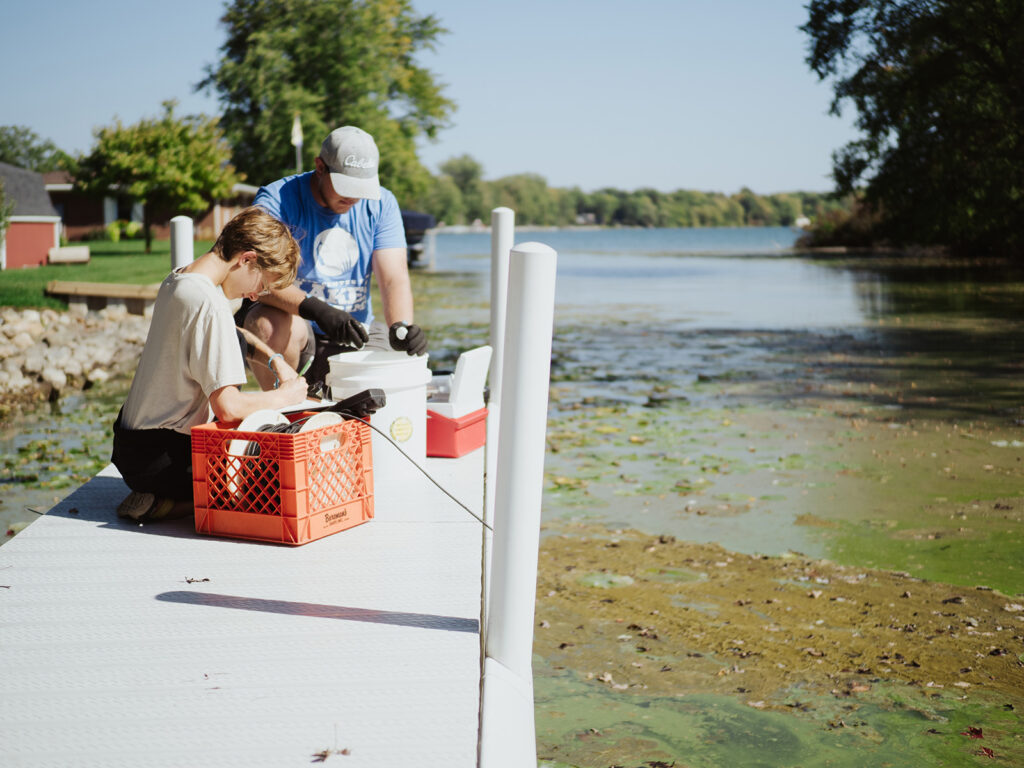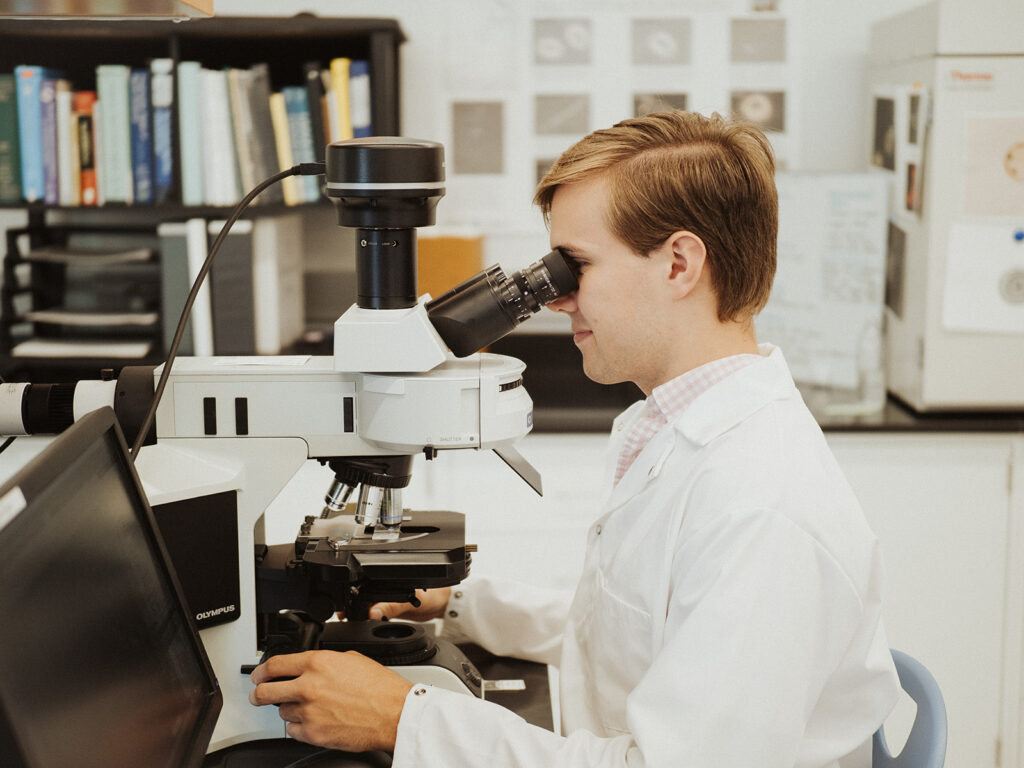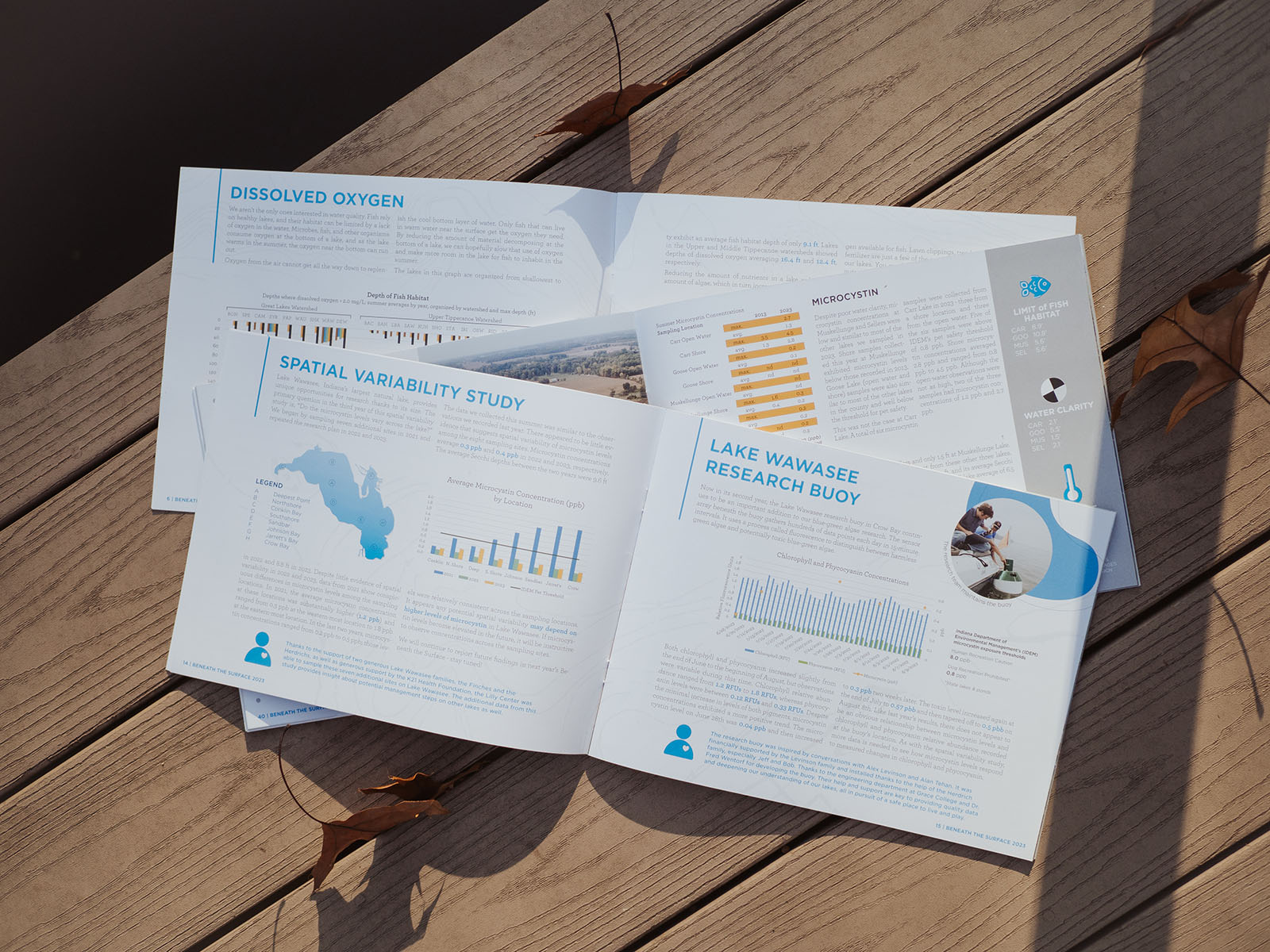A Case for Trustworthy Data: Research Database
As a lake resident, understanding your lake and how to best care for it is important. You might rely on best-practice recommendations from experts like those at the Indiana Department of Natural Resources or the Lilly Center for Lakes & Streams. Through strategic research, detailed scientific analysis, and weekly sampling, we gather essential, high-quality data on Kosciusko County waterways. Then, using education and collaboration, we equip you to protect these natural resources.
Everything hinges on one factor: trustworthy data. The process of collecting, managing, and analyzing data is called the research process. Let’s consider an example of the Lilly Center’s approach to the research process in Kosciusko County.

Defining the problem
The first step in the research process is defining an issue or problem. Ten years ago, the Lilly Center set out to design a research project to learn how to predict and prevent harmful algae blooms (HABs) and keep our community safe. HABs are usually made up of blue-green algae and pose a health risk to pets and humans when they exist at elevated levels and produce toxins. A better understanding is needed of what triggers HABs and the environment in which they develop.
Collecting the data
The next step in the research process requires collecting data- individual points of information. Researchers worldwide know little about the triggers that motivate blue-green algae to produce toxins. As a result, the Lilly Center gathers a wide variety of information about local lakes to uncover patterns and trends. When a research team visits a lake, they collect information about the weather, the clarity of the water, and the availability of dissolved oxygen. Additional water samples are processed in a lab to gather information about nutrients and toxins.

Storing and managing the data
All this information must find a home somewhere. Quality checks and systems ensure that human errors are minimized. Back in 2009, when the Lilly Center began, our team used Excel spreadsheets to organize the data. As our research expanded, we outgrew spreadsheets, and as the amount of data increased, the chances for something to go wrong increased, too. We needed a new system, a database.

What is a research database? We partnered with Winona IT to create a custom database. The database uses an efficient coding language to store information. This project would create high levels of consistency and allow the research team to analyze the data in meaningful ways.
A research database is not the “holy grail” to solve the blue-green algae problem. It is a tool to more effectively and thoroughly understand the state of our lakes and enhance our capabilities. The research team will continue to use quality control and quality assurance measures each time they enter data into the database.
Analyzing data and creating a report
Finally, the team analyzes the data and produces publications like our annual lakes report Beneath the Surface and other research papers. With the help of our newly created database, Beneath the Surface analyzes information from 45 lakes in Kosciusko County. This special edition investigates and clarifies the complex relationships and historical comparisons between land, water, and living organisms in Kosciusko County.

What now?
A tool is only as useful as the person that wields it. Tap the button below to read the most recent research about your lake: